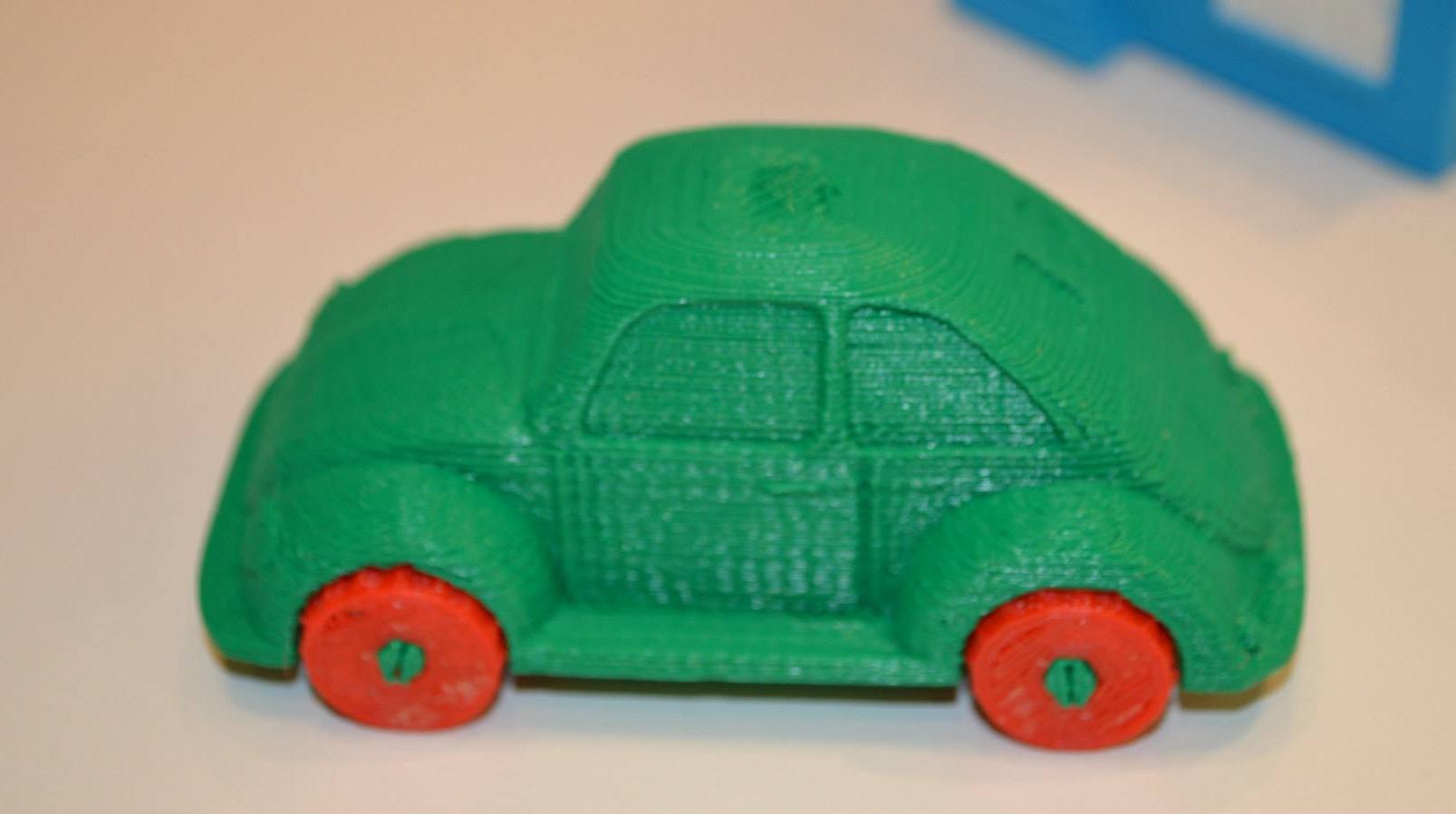Revolutionary New 3D Printing Filaments? Liquid Plastics, Graphene, and Graphite Conductive Filament, Coming Soon
 If you were to ask most 3D printer users what their largest qualms are with current FDM 3D printing technology, one answer would likely be the large layer widths and heights, while the lack of conductible materials available may frustrate those looking to go above and beyond 3D printing plastic doo-dads. We all know what 3D printed objects look like when they are finished printing. You can be certain to see lines where each layer of filament has been laid down upon one another. In most cases, this is not the desired look that a designer is going for, and it is the one factor preventing print from appearing exactly like the original computer model.
If you were to ask most 3D printer users what their largest qualms are with current FDM 3D printing technology, one answer would likely be the large layer widths and heights, while the lack of conductible materials available may frustrate those looking to go above and beyond 3D printing plastic doo-dads. We all know what 3D printed objects look like when they are finished printing. You can be certain to see lines where each layer of filament has been laid down upon one another. In most cases, this is not the desired look that a designer is going for, and it is the one factor preventing print from appearing exactly like the original computer model.
Just today, a man named Stephen Mills, of the United Kingdom, launched an Indiegogo campaign, for 3D printer filaments, that he believes will solve two of the biggest issues with today’s 3D printing technology.
The most unique, and possibly revolutionary of these materials, is what Mills refers to as ‘liquid plastics’. It is pretty much exactly what it sounds like; plastics that come in liquid form. To better understand the possible game changing benefits that this form of plastic could have on the 3D printing space, we must first touch on how the typical FDM 3D printers work.
For those of you who own 3D printers, you know that in order to print objects, you must feed spools of filament (hard plastic in most cases) through an extruder, where it is heated as it is pushed through a nozzle. When heated, the plastic melts and then rehardens after it has had time to cool, in a similar fashion to how a hot glue gun works. When the plastic is placed onto the print bed, or upon previously placed layers, it cools and hardens.
This technology is very limiting, in that nozzle sizes must be fairly large, in order to allow the molten plastic to flow. This is the main culprit in causing printed objects to have noticeable lines and layers.
With Mill’s groundbreaking new ‘liquid plastic’ many of these issues can be averted. The way the plastic works, is that it is held within an airtight container, and when it is exposed to air, it hardens. However, the consistency of the liquid form may be modified depending on how much solvent is added. This means that it can be mixed in a fashion to allow it to flow through nozzles the size of hyperdermic needles, thus eliminating the issues presented by having large nozzle diameters. This provides a means to greatly decrease the layer sizes, and in turn create prints with extremely high resolution.
Mills also explains that he has the ability to create liquid plastics that are made of graphene and/or graphite, and feature conductive properties.
“Our low-cost 3D printer filament is highly conductive and is good for printing circuit tracks, touch sensitive elements and many other applications,” Mills explained. “The possibilities are ‘Almost’ endless. Limited only by our imaginations.”
Opening the door to designers and engineers to 3D print objects which can be conductive in nature, means that we could begin to see the 3D printing of not only plastic objects, but objects that can have electrical components, lights, and perhaps even more, as this technology advances.
“Using our conductive filaments, and our new forms of liquid plastics opens up whole new exciting areas in 3D printing, from electronics to applications needing micron-resolution,” said Mills. “We see it as a very important next stage development process.”
Mills explains his crowdfunding campaign in more detail below:
Mills is looking to raise £11,700 via his crowdfunding campaign. The campaign is using Indigogo’s ‘flexible funding’ option, meaning that Mills will get the funds contributed whether or not the funding goal is reached. As some of his backer rewards, he is offering varying amounts of both conductive and liquid plastic filaments. He is also offering the option for an extruder that is capable of letting you produce your own filaments.
It should be interesting to see how well this campaign does. It will also require the advent of 3D printers which are set up to print with these new materials. They will be required to use an extruder that can be partnered with hyperdermic needle-like nozzles.
What do you think? Will Mills reach his funding goal? Would this method of 3D printing work? Discuss in the 3D Printing with Liquid Plastics forum thread on 3DPB.com
More details on 3D printing with liquid plastics can be seen in the two videos below:
Subscribe to Our Email Newsletter
Stay up-to-date on all the latest news from the 3D printing industry and receive information and offers from third party vendors.
You May Also Like
3D Printing Unpeeled: $5000 Cold Spray 3D Printer, Roland DGA & Living Materials
The AeroForge is a $5000 cold spray metal printer for copper made by a student team at Rice University. In a paper for ACS Central Science a team from Nanjing...
3D Printing Webinar and Event Roundup: April 28, 2024
In this week’s 3D Printing Webinar and Event Roundup, the Ceramics Expo is taking place in Michigan, Stratasys continues its advanced training courses, and SPE is holding a Polymer Characterization...
Meltio Expands Global Reach with New Partnerships in the Americas and Europe
Spanish 3D printing manufacturer Meltio has expanded its sales network across the globe. With the addition of three new partners in the United States, Brazil, Argentina, and Italy, Meltio aims...
US Army Corps of Engineers Taps Lincoln Electric & Eaton for Largest 3D Printed US Civil Works Part
The Soo Locks sit on the US-Canadian border, enabling maritime travel between Lake Superior and Lake Huron, from which ships can reach the rest of the Great Lakes. Crafts carrying...































